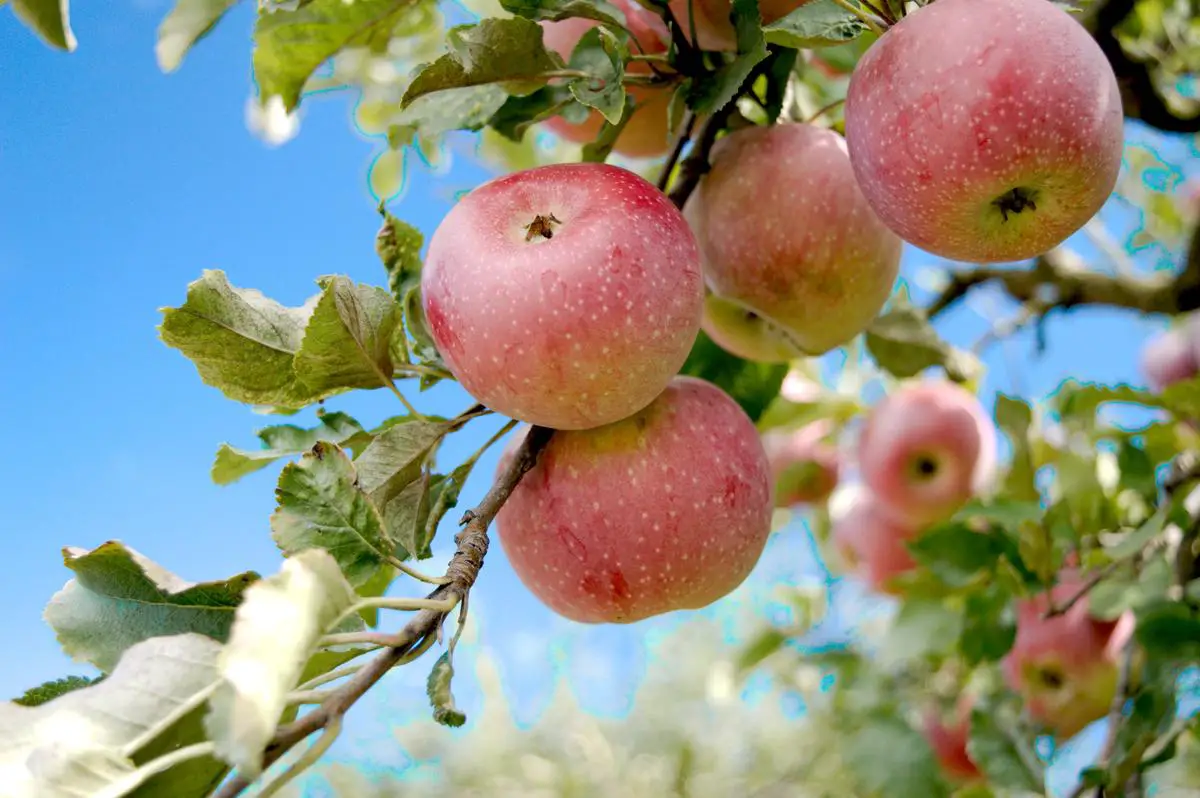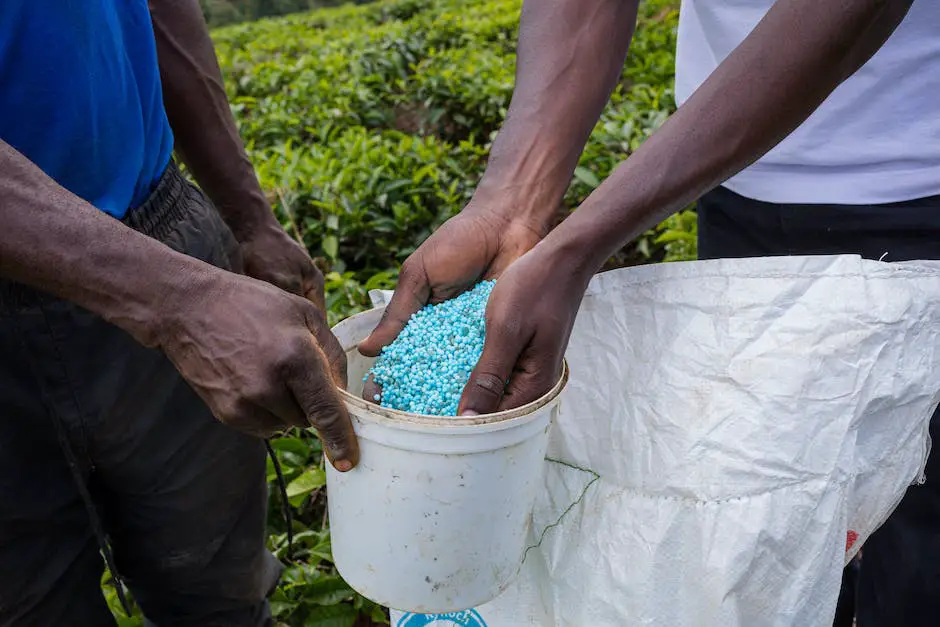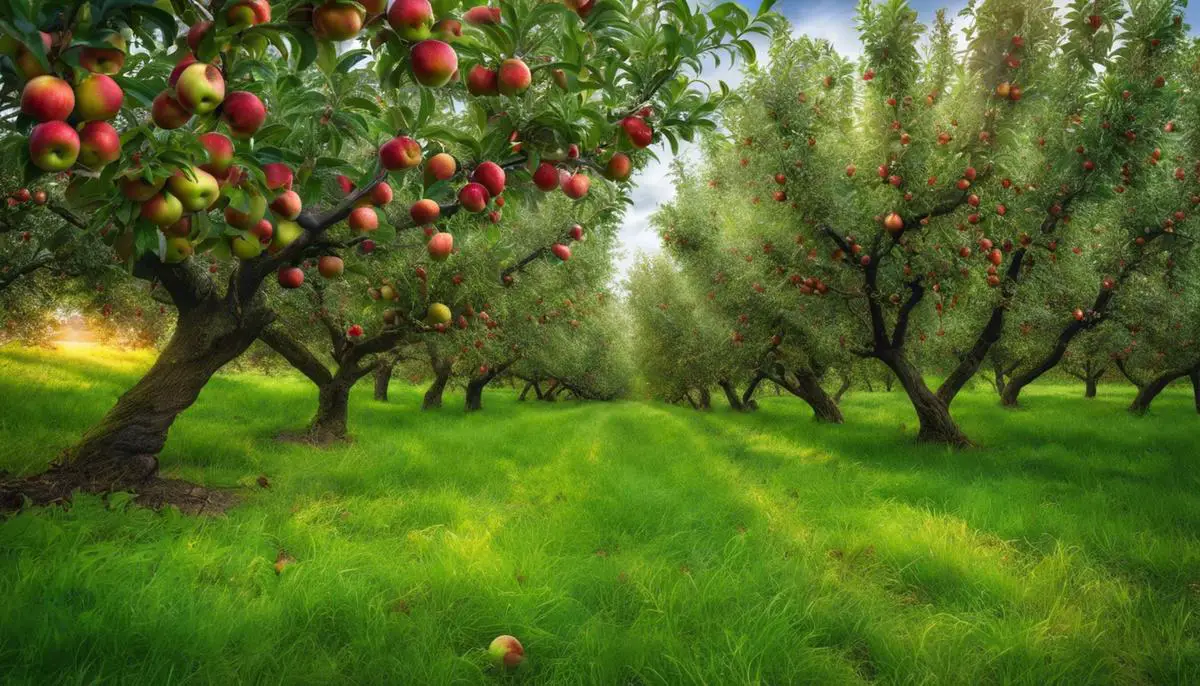Proper nourishment and care of apple trees play a crucial role in their overall growth, health, and productivity. Understanding the nutritional needs of an apple tree, spanning from vital elements such as nitrogen, phosphorus, potassium, and a range of others is a fundamental step towards fostering its wellbeing. This precondition is underlined by the wide variety of fertilizers available – organic or synthetic, liquid or granular – each having their unique benefits and drawbacks. Layered on top of this is the all-important knowledge of when and how to appropriately apply these fertilizers to maximize their effectiveness while avoiding potential harm to the delicate root structure of the tree. This multifaceted approach allows for the provision of the intricate balance of nutrients that apple trees require to fully thrive.
Understanding Nutrient Requirements of Apple Trees
The Orchard Almanac: Nutrient Requirements for Thriving Apple Trees
Apple trees, while being a delightful addition to any garden, demanding special love and care. For these fruit bearers to reach their full potential, specific nutrient requirements need to be met. Understanding these requirements goes a long way in ensuring a fruitful harvest.
Firstly, let’s explore the macronutrients that apple trees need. These are the elements your apple trees require in abundant amounts. And there are three macronutrients to be concerned about: Nitrogen (N), Phosphorous (P), and Potassium (K).
Nitrogen plays a crucial role in the growth of apple trees – helping them develop lush, vibrant foliage. However, a balanced approach is required. Too much nitrogen and your tree may allocate all energy into leaf growth at the expense of fruit production. An annual application of a high-nitrogen fertilizer can generally meet your tree’s nitrogen needs.
Phosphorous, while needed in lesser amounts, is vital for various biological processes such as energy transfer and protein synthesis. It also promotes early maturity, increases disease resistance, and enhances fruit quality. A phosphorus-rich fertilizer or bone meal can provide this nutrient.
Potassium is all about promoting vigorous growth and overall health. It strengthens cell walls, increases disease resistance, and plays a part in photosynthesis and energy transfer. Wood ash is a natural source of potassium but, for the sake of consistency, an N-P-K fertilizer with a high potassium content is preferred.
Beyond the macronutrients, apple trees also require secondary nutrients and micronutrients. These include Calcium (Ca), Magnesium (Mg), Sulphur (S), Iron (Fe), Manganese (Mn), Zinc (Zn), Copper (Cu), Boron (B), Molybdenum (Mo), and Chlorine (Cl).
Calcium and Magnesium play a vital role in the tree’s photosynthesis process, while Sulphur is part of the certain amino acids essential for the tree’s growth. The rest, though needed in minute quantities, are still vital for different biological processes.
Finding a balance while providing these nutrients might seem intimidating at first. That’s where soil tests come in. A soil test will give you insights into the nutrient condition and pH of your soil. Optimal soil pH for apple trees is typically between 6.0 and 7.0. Lime or Sulphur can make pH adjustments as necessary.
Post soil test, select a proper fertilizer—an N-P-K fertilizer if your soil is lacking the macronutrients or a customized mix fit for addressing specific deficiencies.
Lastly, remember that every apple tree is different, and the conditions it’s growing in are unique. Always observe your tree’s response to your nutrient management efforts, watch for any signal of nutrient deficiency or surplus reflected in leaf color, growth rate, and fruit output.
Nurturing apple trees is both a science and an art, peppered with patience, persistence, and an eagerness to learn. Now, armed with these nutrient insights, you’re a step closer to achieving a thriving, bountiful apple orchard. Enjoy the remarkable journey of apple cultivation!

Photo by bkaraivanov on Unsplash
Different Types of Fertilizers
Diving deeper into apple tree fertilization, there exist numerous kinds of fertilizers, each having its unique composition that makes it more suitable for certain purposes than others. One can tailor their choices based on the specific nutritional needs of their apple trees.
Let’s start with Organic Fertilizers. To some, it’s the ‘listen to vinyl’ of fertilizing your apple tree – you are old school, eco-conscious, and love the concept of ‘giving back’ to nature. Organic fertilizers like compost, green manure, and organic matter not only replenish the major macronutrients – Nitrogen, Phosphorous, Potassium – but also deliver secondary nutrients and micronutrients in a slow, sustained manner. They improve soil structure, water retention and offer a habitat for beneficial microbes. Keep in mind: they work gradually, steadily enhancing conditions rather than providing a quick nutrient spike.
Then we have Synthetic or Inorganic Fertilizers. It’s more of a ‘streaming on Spotify’ approach – they’re potent, fast-acting, and efficient. Oftentimes referred to as ‘chemical fertilizers,’ they supply nutrients directly, in a readily available form. They come in various formulations – granular, liquid, or slow-release, allowing flexibility based on the tree’s requirements. They’re easy to measure and apply, and help quickly rectify nutrient deficiencies. But use them judiciously – too much can harm your trees and the environment.
Next up, the hybrids – Organic-based Inorganic Fertilizers. The ‘Bluetooth speakers with a retro design’, if you will. As the name suggests, these fertilizers combine the best of both worlds. They contain a significant proportion of organic matter mixed with synthetic nutrients. This makes them more efficient than purely organic fertilizers and also helps in reducing the negative impacts associated with synthetic fertilizers.
Finally, we come to Specialty Fertilizers. They’re the ‘gold-plated, limited edition, high-definition audio setup.’ These fertilizers are designed for specific purposes or situation. For example, foliar fertilizers (applied directly to leaf surfaces); starter fertilizers (higher in phosphorous, used when planting); specifically developed ‘fruit tree fertilizers’; or water-soluble fertilizers optimized for use in irrigation systems. Make sure to use these as per the given instructions, as they are generally more potent.
Remember, fertilizing isn’t just feeding. It’s more about striking the right balance and timing. Every apple tree is unique, each season might be different, and nutrition needs can change accordingly. It’s about paying close attention, on-going learning, and course-correcting as needed. It’s about a gentle nudge here, a crucial intervention there, and a long-term commitment, to a hobby you love and cherish. Happy Gardening!

Correct Timing and Application of Fertilizer
Achieving the optimum yields and quality in apple trees requires a good understanding of when and how to apply fertilizer for their best benefit. While the type of fertilizer matters, ensuring it’s applied at the right time to maximize nutrient intake is equally important.
As we dive into the depths of apple ennoblement, apple trees apply a rule of thumb of an early spring application. Ideally, the application of fertilizer should occur just before the beginning of a growth spurt, when the tree can most readily absorb and utilize the nutrients.
In a typical climate, this moment generally comes in late winter or early spring. This period ties with the moment just after apple trees break dormancy and begin new growth. During this phase, use of fertilizer will aid in creating sturdy, more healthy branches and leaves which in-turn produce higher quantity and quality of fruit.
Now, knowing when to apply fertilizer for apple trees isn’t enough. Understanding how to apply fertilizer is the other half of the equation. For this, apple enthusiasts recommend a two-zone fertilizer system. This is carried out by fertilizing a circular area expanding from about a foot from the trunk out to the drip line, which is the area directly under the outer limits of the tree branches. In other words, there should be a donut-shaped application area to the apple tree— starting at about 1 foot from the trunk and ending at the edge of the tree’s drip line. This method supports maximum absorption and nutrient utilization.
This application process ensures that the roots, which are the main nutrient absorption area, receive an ample supply of the nutrients they require. Be sure to spread the fertilizer evenly across your application zone for best results. This can be achieved by manually sprinkling the fertilizer or using a spreader for larger apple tree orchards.
Also, it’s worth noting that overly mature apple trees, especially non-bearing ones, may require less frequent fertilization than younger, fruit-bearing trees. If the tree’s growth appears vigorous and healthful without fertilization, consider reducing the amounts applied, as too much of certain nutrients can be just as detrimental as a deficiency.
Fertilizing apple trees is a continuing learning journey, just as is true for any aspect of gardening. Every variety of apple tree may respond differently to the same regimen, and every soil has its charms and peculiarities. Still, with careful observation, a touch of knowledge, and enthusiasm for your apple trees, most occasions will produce successful, bountiful harvests.

Overall, ensuring productive and healthy apple trees is no small task. It’s a holistic undertaking that necessitates an understanding of the trees’ nutritional needs, insight into the range of applicable fertilizers, and the knowledge of proper timing and techniques for fertilizer application. By giving due attention to all these elements, a healthy balance can be struck. In the end, success is measured through flourishing apple trees that bear bountiful, nutritious fruits, reflecting the careful nurturing they have received through their lifetime. Armed with this information, everyone can make informed decisions and contribute to the health and bounty of their own apple trees.